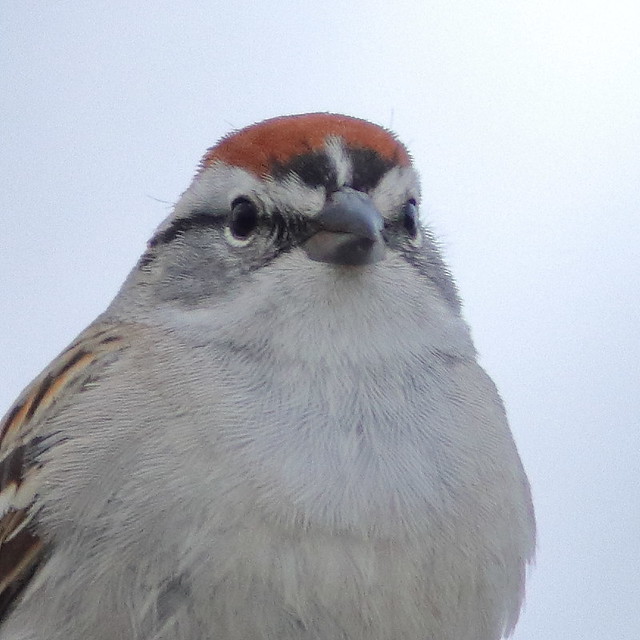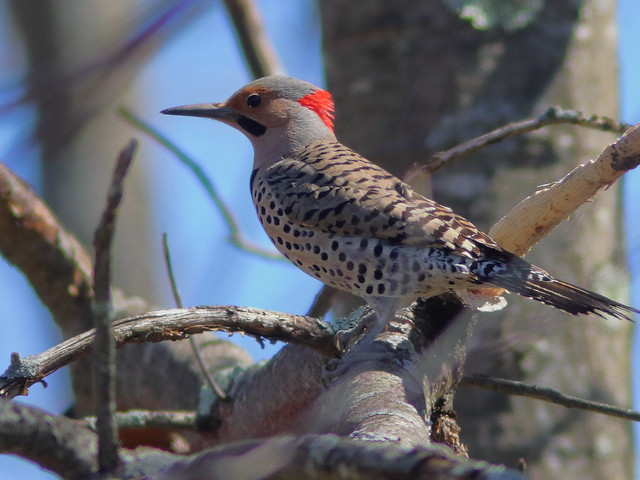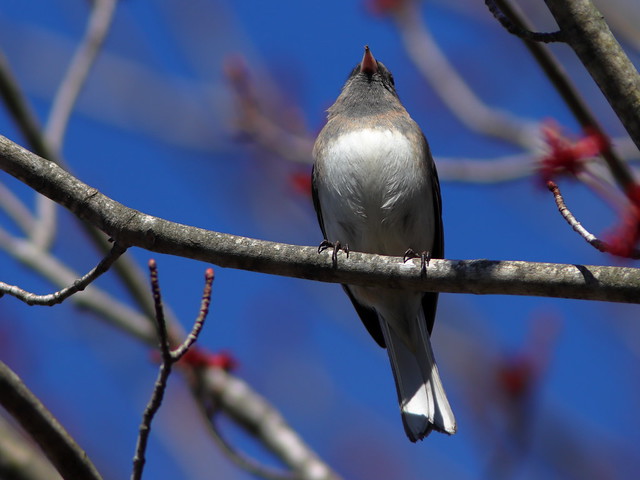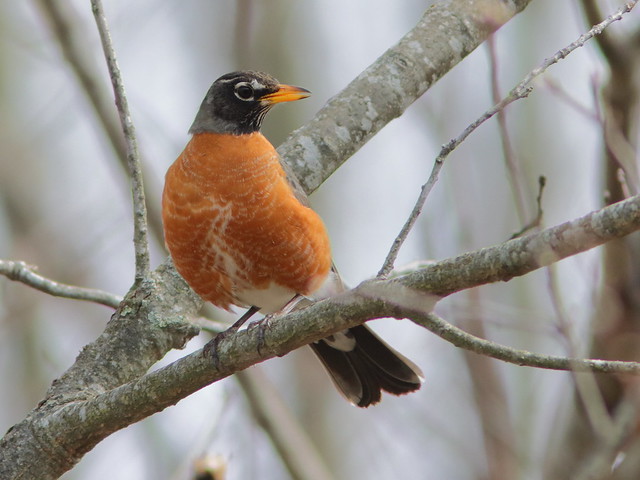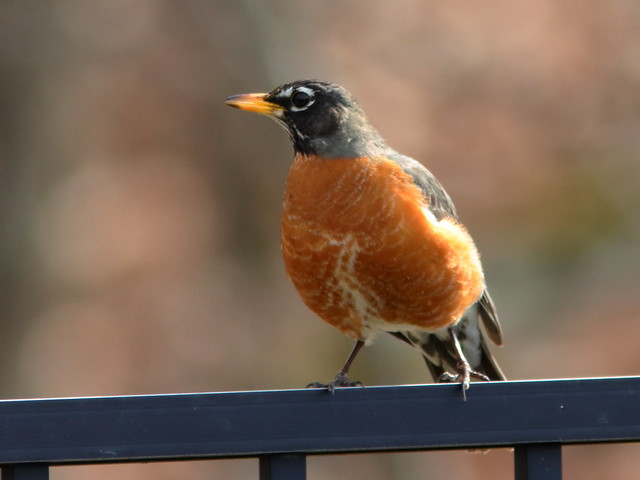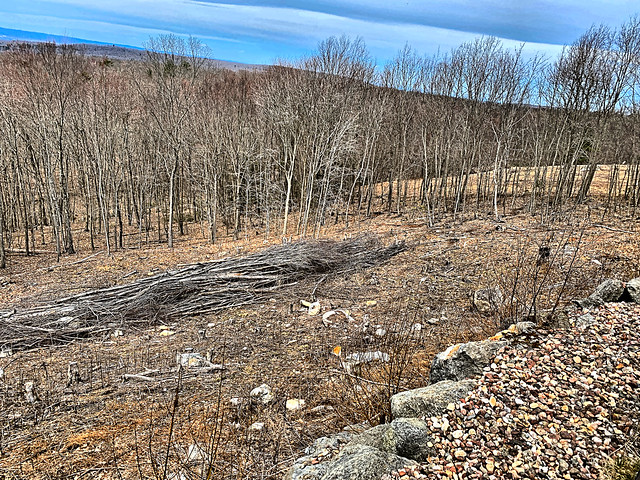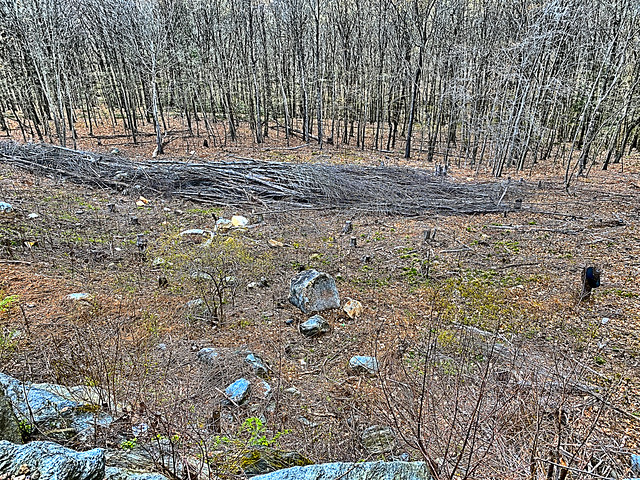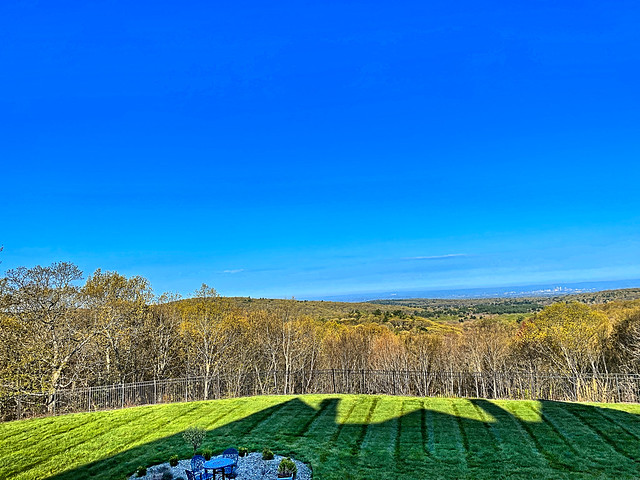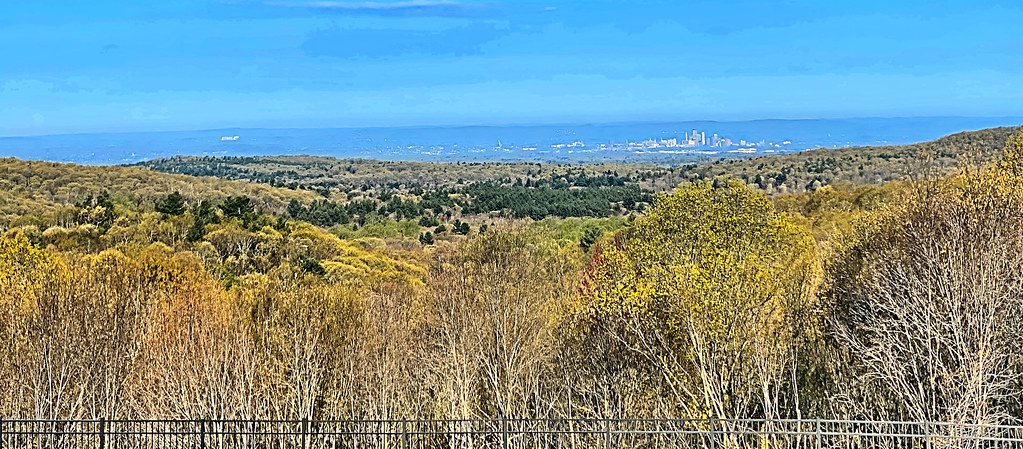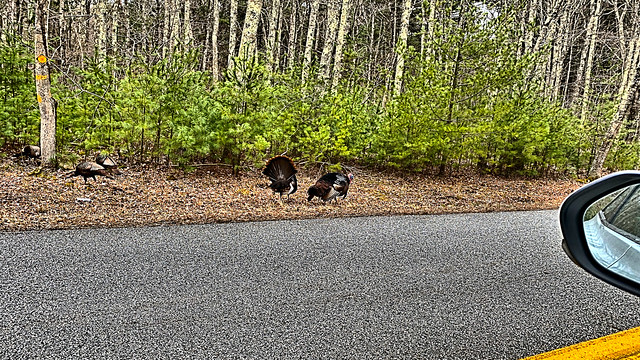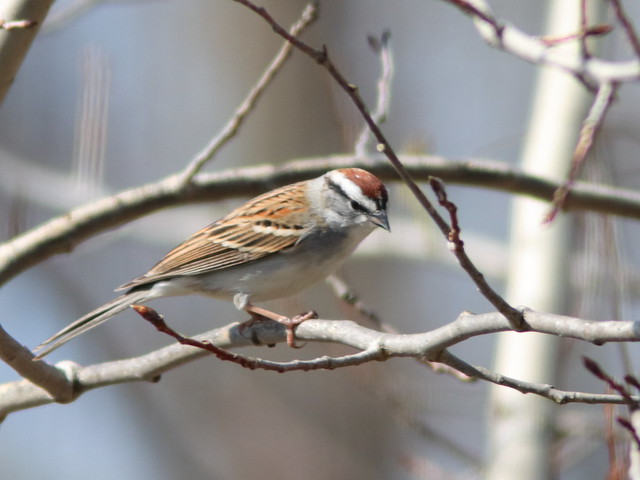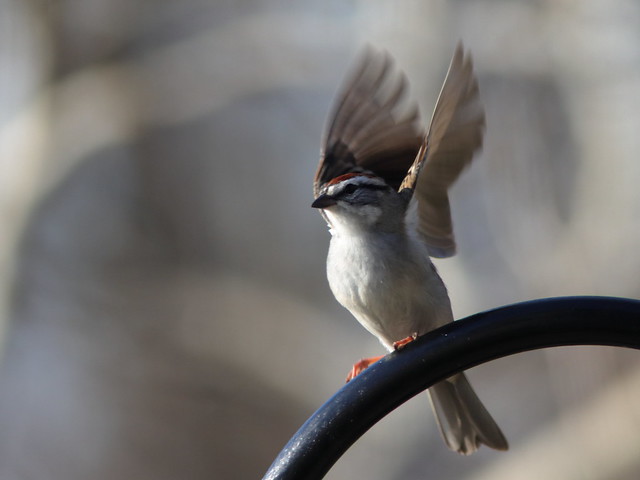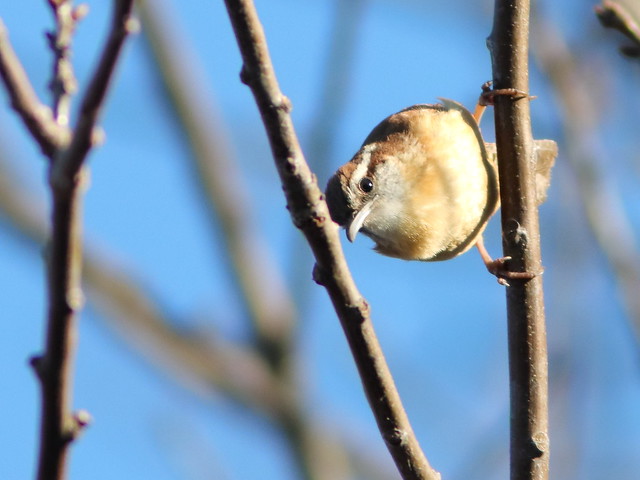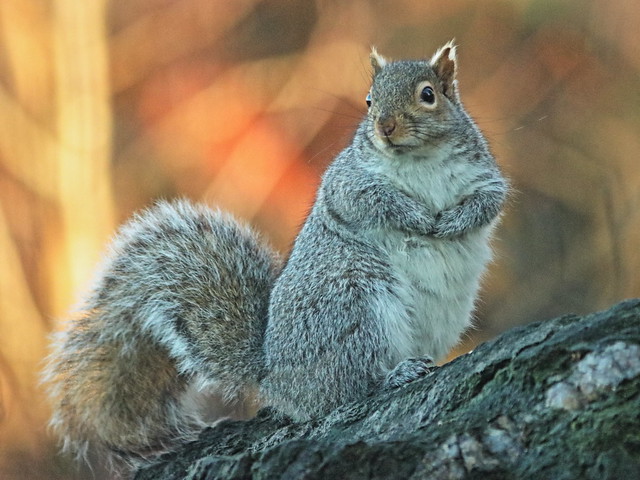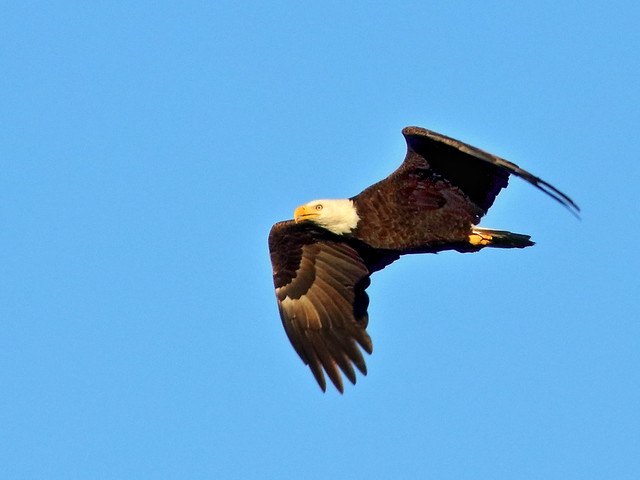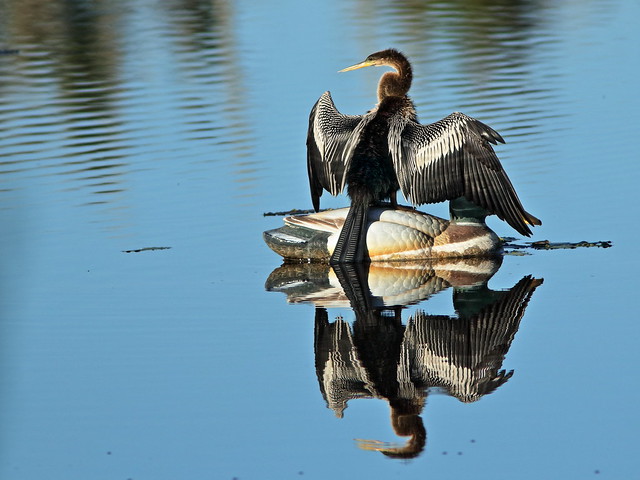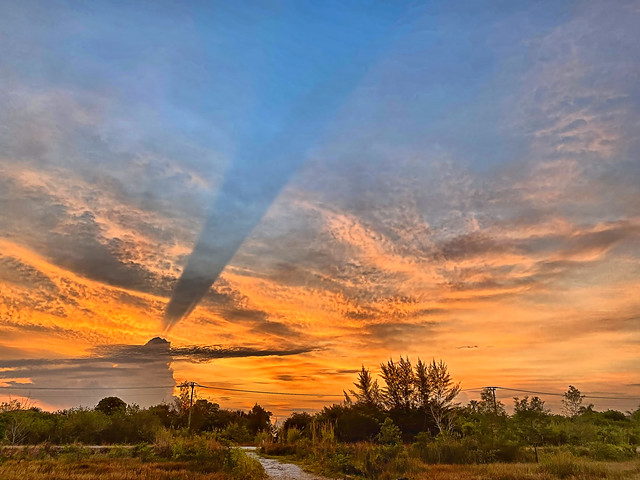Sorry I missed being on the computer last week, but I had an excused absence. More about that later...
Chipping Sparrows have returned in good numbers. I got out into the back yard and was able to photograph some without the intervening window pane:
A couple of portrait crops emphasize their subtle color and beauty:
A male Northern Flicker showed up and permitted a few brief views:
The Dark-eyed Juncos have all departed for their northern breeding grounds. This was the last one I saw before my unexpected lapse:
An American Robin flew in and settled on the fence:
It also posed for portraits:
The male American Goldfinches had attained full breeding plumage, but most of the tree buds had not yet opened, on April 11:
Their winged seeds were nearly fully developed by April 23:
The floor of the back-acreage clear-cut showed no new growth on April 7:
The cleared area was beginning to green up on April 21. Clumps of Sow Thistle were emerging. In mid-summer their fluffy pappus and seeds will provide nesting material and food for the goldfinches:
On April 21 the lawn and surrounding woodland were finally beginning to look as if spring had arrived:
The twin chimneys of our home cast long morning shadows on April 25:
This was the first time in years that I failed to post a blog every Thursday. I just spent 5 nights in hospital and got out Tuesday. The illness began Thursday night with high fever and shaking chills, diagnosed as septicemia. I was hospitalized and administered IV antibiotics.
View from my hospital room. I hoped to see migrating warblers amid the fresh foliage, but I spent most of six days lying flat on my back:
Presently I am at home taking oral antibiotics. Fever had been up to 102.6° F (39.2° C) but my temperature has returned to normal up to present . Feel pretty good but my chemotherapy (which weakens my immunity) has been delayed for another week.
Effects of the infection and more aggressive chemotherapy have driven my platelet count down to 38-47 (normal is 120) and also caused anemia with low white blood cell count (pancytopenia). I feel pretty energetic now-- if not too cold and windy I got out to sit in the back yard and even took a 1+ mile walk along the lake.
Our lovely granddaughter tried on her gown for a High School senior ROTC Military Ball. It is such a joy to be living as a member of this three-generation household:
This week's header: Clear Sky on April 25
= = = = = = = = = = = = = = = =
My Corner of the World
________________________________________________
Please visit the links to all these posts to see some excellent photos on display
________________________________________________



